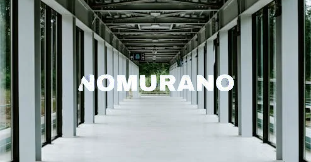Introduction
If you’re looking for a budget-friendly way to refresh old furniture or give your home projects a rustic, matte finish, chalk paint is the perfect solution. Unlike traditional paint, chalk paint requires little to no surface preparation, making it a favorite among DIY enthusiasts. In this guide, we’ll explore everything you need to know about how to make chalk paint, from simple recipes to application tips that guarantee beautiful results.
What Is Chalk Paint?
Chalk paint is a decorative paint known for its ultra-matte finish and velvety texture. It adheres to almost any surface without priming or sanding, which is why it’s widely used for furniture, cabinets, and home décor projects. Originally popularized for vintage and shabby-chic styles, chalk paint has now become a versatile tool for both modern and traditional aesthetics.
Why Make Your Own Chalk Paint?
While store-bought chalk paint is convenient, making your own comes with benefits. It’s cost-effective, customizable, and allows you to control thickness, color, and texture. DIY chalk paint also opens the door to experimenting with different recipes, helping you find the formula that works best for your projects.
Essential Ingredients for DIY Chalk Paint
The core of any chalk paint recipe includes latex paint and a powder-based additive. The most common options are:
- Plaster of Paris – creates a smooth, durable finish.
- Calcium Carbonate Powder – produces a softer, creamier texture.
- Baking Soda – quick and inexpensive, though less durable.
Each ingredient offers a slightly different look and feel, so you can choose based on availability and the final effect you want.
Tools You’ll Need
To make chalk paint at home, you’ll need:
- Measuring cups and spoons
- A mixing container or jar
- Stirring stick or whisk
- Latex paint in your chosen color
- Protective gloves and a dust mask (for handling powders)
Having the right tools ensures a smooth mixing process and prevents lumps in your paint.
Recipe 1: Chalk Paint with Plaster of Paris
This is one of the most popular methods due to its smooth finish and durability.
- 1 cup of latex paint
- 1/3 cup of Plaster of Paris
- 1/3 cup of water
Mix the Plaster of Paris and water until smooth, then add the mixture to your paint. Stir well until completely blended. This recipe produces a strong chalk paint suitable for high-use furniture like tables and chairs.
Recipe 2: Chalk Paint with Calcium Carbonate
For a creamier texture that spreads easily, use this formula:
- 1 cup of latex paint
- 2–3 tablespoons of calcium carbonate powder
- 2 tablespoons of water
Dissolve the calcium carbonate in water, then stir into the paint. This mixture creates a soft consistency that’s perfect for detailed or ornate furniture pieces.
Recipe 3: Chalk Paint with Baking Soda
If you want a quick, inexpensive version, try baking soda.
- 1 cup of latex paint
- 2–3 tablespoons of baking soda
- Small amount of water if needed
Mix the baking soda directly into the paint until smooth. The texture may feel a bit grittier than other recipes, but it works well for distressed finishes.
Tips for Mixing Chalk Paint
When mixing, always add the powder to water first before combining with paint to prevent clumps. Stir thoroughly to ensure even texture. If your paint becomes too thick, add a small amount of water to adjust consistency. Store leftover chalk paint in an airtight container to prevent drying.
Preparing Surfaces for Chalk Paint
One of the best things about chalk paint is that it usually requires no sanding or priming. However, wiping down surfaces to remove dust and grease will help with better adhesion. For glossy finishes, a light sanding can improve results.
Applying Chalk Paint: Step-by-Step
- Stir the paint – Always mix well before using.
- Apply with a brush or roller – Use even strokes to cover surfaces.
- Allow to dry – Chalk paint typically dries in 30–60 minutes.
- Add a second coat – Apply if necessary for full coverage.
- Distress if desired – Sand lightly to create a vintage or rustic look.
This simple process makes chalk paint accessible even for beginners.
Sealing and Protecting Chalk Paint
Chalk paint by itself is prone to scuffing, so sealing is important. You can finish your project with clear wax for a classic matte look, or use a water-based polyurethane for a more durable protective coat. Wax adds depth and richness to the color, while polyurethane provides stronger resistance for high-use items.
Creative Uses for Chalk Paint
Chalk paint isn’t limited to furniture. You can use it on walls, picture frames, cabinets, planters, and even fabric. Its versatile texture allows for layering, stenciling, and artistic techniques like dry brushing. Many DIYers also use chalk paint for kitchen upgrades, turning outdated cabinets into stylish focal points.
Troubleshooting Common Issues
- Paint too thick: Add a few drops of water and stir.
- Lumpy texture: Strain the mixture or mix powders more thoroughly before adding to paint.
- Poor adhesion: Lightly sand glossy surfaces before applying paint.
- Streaky finish: Use a quality brush designed for chalk or mineral paints.
These simple fixes ensure your project looks professional.
Cost Comparison: DIY vs. Store-Bought
Making your own chalk paint often costs a fraction of store-bought brands. A quart of commercial chalk paint can cost significantly more than a quart of DIY latex-based chalk paint. With homemade versions, you can experiment with different shades and finishes without overspending.
Environmental Benefits of DIY Chalk Paint
By mixing your own chalk paint, you reduce packaging waste and use fewer chemicals compared to some store-bought formulas. Choosing low-VOC latex paint as your base makes your homemade paint safer for both your home and the environment.
Why Chalk Paint Remains Popular
The continued popularity of chalk paint lies in its simplicity and adaptability. It allows anyone—from beginners to experienced DIYers—to transform furniture and home décor with minimal effort. The matte, vintage-inspired look remains timeless, and the ability to customize colors and finishes adds to its appeal.
Conclusion
Learning how to make chalk paint is not only easy but also rewarding. With just a few ingredients and simple techniques, you can create a versatile paint that works on nearly any surface. Whether you’re updating a dresser, adding charm to cabinets, or experimenting with creative décor, chalk paint delivers beautiful results. By making your own, you save money, gain creative control, and enjoy the satisfaction of turning everyday items into stunning pieces.




